Create Beautiful Recipe Card Templates in Word
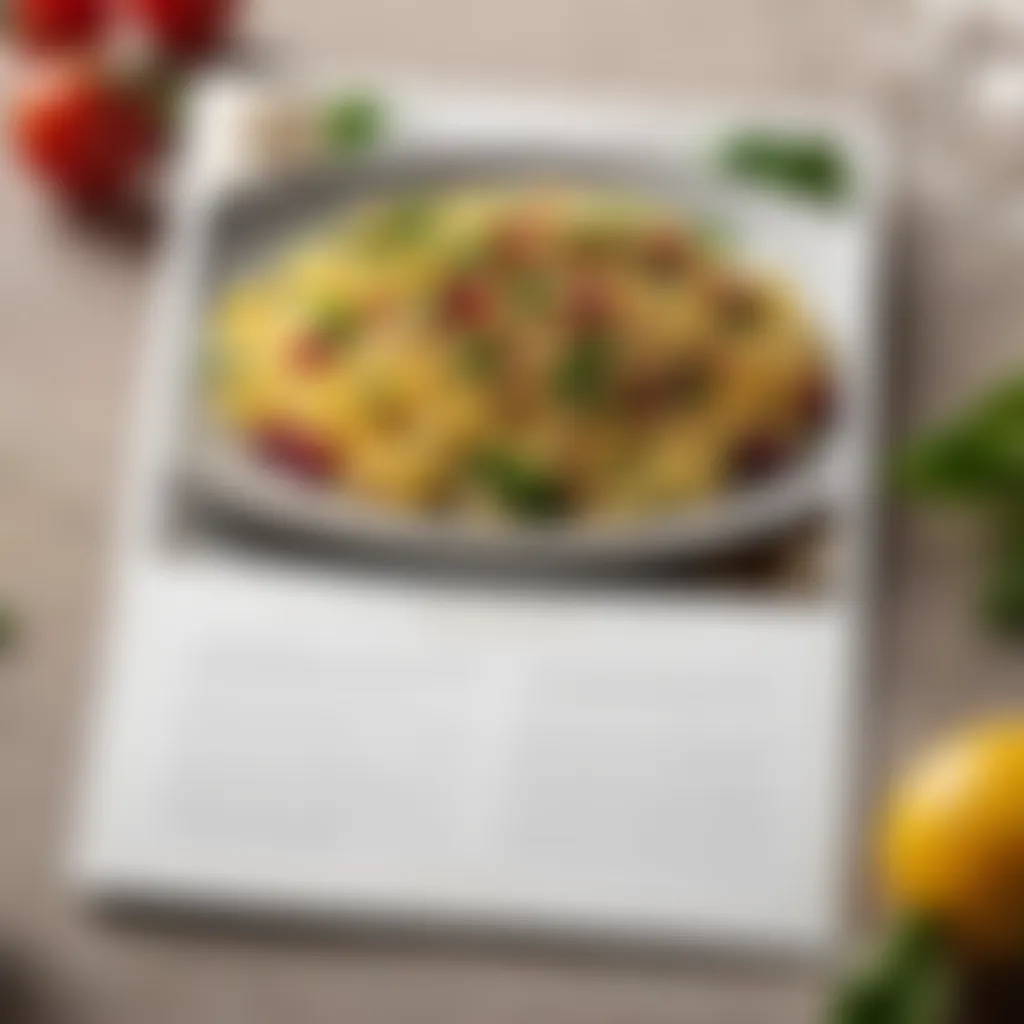
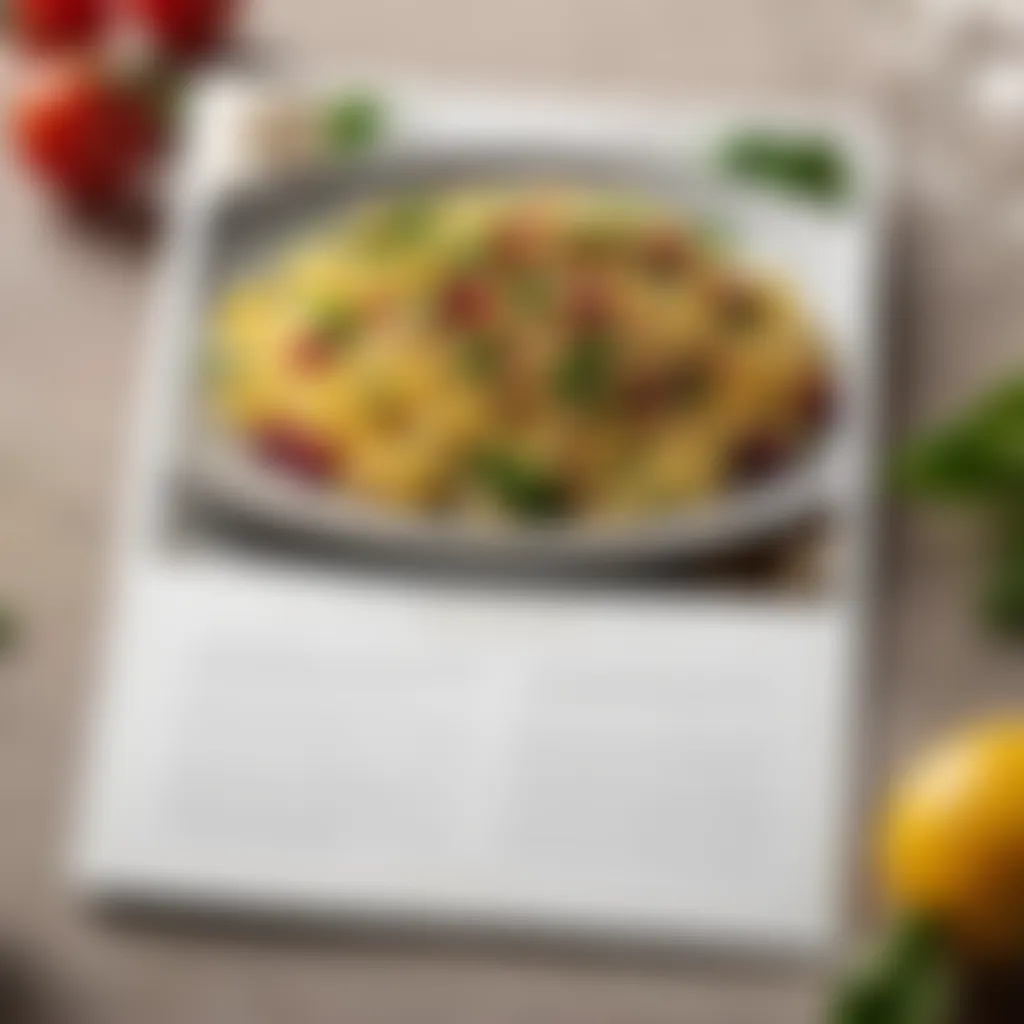
Intro
Creating recipe card templates in Microsoft Word is a practical skill that can quickly elevate your culinary presentations. Whether you're organizing family favorites or planning a cookbook, a well-designed recipe card not only makes cooking easier but also adds a personal touch. This guide walks you through every step of crafting these templates, from the initial layout to the finer details that will make your cards stand out.
Ingredients:
To begin crafting your recipe card template, consider this list of ‘ingredients’ — essential elements that will make your template functional and aesthetically pleasing:
- Title Section: Room for the recipe name, preferably at the top.
- Ingredient List: A structured section that can be easily organized, usually using bullet points or tables.
- Preparation Steps: Clear instructions laid out in logically numbered steps.
- Cooking Time: A section dedicated to total cooking time, prep time, and serving size.
- Visuals: An area for images or your own illustrations that complement the recipe.
- Tips and Notes: A small area reserved for any personal advice or modifications that can enhance the recipe.
Preparation Steps:
Now that you’ve gathered your ingredients, it’s time to get to the preparation phase. This section focuses on the detailed instructions for laying out your template effectively.
- Open Microsoft Word and choose a blank document. Consider setting the page orientation to landscape for more space.
- Adjust Margins: Navigate to the ‘Layout’ tab and select ‘Margins.’ A standard margin setting often works best, but feel free to customize them to fit your design.
- Insert Title: Use an eye-catching font for the title, making it larger than the other text to draw attention. Placing it at the top center typically looks best.
- Create Your Ingredient List Section: Consider using a table format. Go to ‘Insert’, select ‘Table’, and then decide how many rows and columns you need based on your recipe type.
- Detail out Preparation Steps: Number your preparation steps clearly. Use the ‘Numbered List’ function to maintain order and clarity.
Customization Tip: Play with font styles and colors to make your template unique, ensuring it reflects your personal kitchen style.
Technical Aspects:
Delving into Microsoft Word’s more technical features can facilitate the creation of this recipe card. Below are crucial specifications to keep in mind:
- Temperature Settings: Clear indications on cooking temperatures should be included in the relevant sections of your template.
- Timing Specifics: Allocate space for actual cooking times, perhaps in a colorful text box for emphasis.
- Highlighting Techniques: Use bold or italic fonts for key cooking techniques to help emphasize the more critical steps.
Cooking Process:
As the template takes shape, consider the following sequential steps for a seamless cooking process:
- Once your layout is complete, focus on inserting your recipe details.
- Fill each section methodically: Ingredients, Preparation Steps, and any important notes.
- Save your crafted template, ensuring it is named appropriately for easy access later.
- Test Your Template: Before printing or sharing, run through the recipe to ensure everything is clear and easy to follow.
Troubleshooting Tips:
No one’s perfect, and recipe cards can always use a few adjustments. Here’s how to troubleshoot some common issues:
- If you run out of space for ingredients, consider adjusting your font size or margin settings.
- For unclear instructions, ask someone else to read through your steps for clarity.
- If the template isn’t visually appealing, experiment with different color themes or image placements until it suits your taste.
By the end of this guide, you’ll be well on your way to designing a recipe card that not only serves as a practical cooking guide but also reflects your individual style. Dive into your creativity and start crafting that perfect template!
Intro to Recipe Card Templates
In the realm of culinary arts, where creativity meets practicality, crafting a recipe card template serves as an invaluable tool for anyone who takes joy in cooking. A well-designed recipe card not only delineates the ingredients and steps essential for creating a dish but also encapsulates the essence of the cook's unique style—be it minimalist elegance or vibrant chaos. With the right template, the act of sharing recipes becomes more accessible and visually appealing.
Importance of Recipe Card Templates
Recipe card templates are akin to the framework of a well-constructed meal. They provide organization and structure, allowing cooks to present their recipes in a manner that's easy to follow. Here are a few reasons why investing time in creating a thoughtful template can enhance your culinary experience:
- Consistency: Using templates ensures that your recipes are presented uniformly, making it simpler for others to grasp your cooking techniques.
- Personalization: Each template can be tailored to reflect your personality or the theme of your kitchen. Whether it’s a rustic vibe or a modern aesthetic, customization adds a personal touch that resonates with your audience.
- Preservation of Tradition: For many, recipes are tied to cherished memories. A neatly formatted card can serve as a keepsake, preserving culinary traditions for future generations.
- Efficiency: A template streamlines the process from creation to sharing, allowing more time for the actual cooking rather than worrying about the nitty-gritty of presentation.
To sum it up, recipe card templates are essential for efficiently organizing culinary creations, sharing them with family and friends, and adding a dash of style to your cooking endeavors.
Overview of Microsoft Word's Capabilities
Microsoft Word emerges as a reliable ally in the journey of designing recipe card templates. Its diverse range of features simplifies the task of crafting visually striking and functional cards.
- User-Friendly Interface: Even if you’re a novice, Word offers an intuitive layout that makes navigation straightforward. You'll find everything you need at your fingertips.
- Customization Options: With a vast selection of fonts, colors, and styles, Word allows you to create a recipe card that reflects your artistic vision. You can modify text sizes, incorporate tables, or even add images with ease.
- Template Library: For those who prefer a head start, Microsoft Word provides a plethora of pre-designed templates to choose from. These can be customized further to suit your needs or simply used as is.
- Compatibility: Word documents can be easily exported into various formats, be it for printing or sharing online, ensuring that your recipe cards reach friends and family without a hitch.
By leveraging the capabilities of Microsoft Word, you can turn a simple piece of paper into a culinary canvas where your recipes come alive, paving the way for memorable meals and shared experiences.
Understanding the Structure of a Recipe Card
A well-crafted recipe card serves as more than just a vessel for ingredients and instructions; it’s a cherished memento in many kitchens, often filled with family recipes passed down through generations. Comprehending the core structure of a recipe card is key to creating templates that resonate with both functionality and aesthetics.
Key Components of a Recipe Card
Every recipe card typically boils down to several essential components. At the top, you’ll find the title, which could be Grandma's Chocolate Chip Cookies or Quick Veggie Stir-Fry. A compelling title draws the reader in right away. Underneath the title, listing ingredients clearly is crucial. Each ingredient must be easily readable. Use of bullet points helps in making them stand out.
Following the ingredients, the instructions come next. Clarity here is vital—step-by-step directions should be straightforward enough that anyone can follow them without much fuss. Including cooking times and serving sizes matters too, as they inform the cook of how long to dedicate in the kitchen.
Lastly, don’t overlook the space for notes or tips. This can include personal touches like "Best served warm with a scoop of vanilla ice cream!" or "Can substitute with almond flour for a gluten-free version." Such insights not only provide flexibility but also encourage personalization.
Common Layout Formats

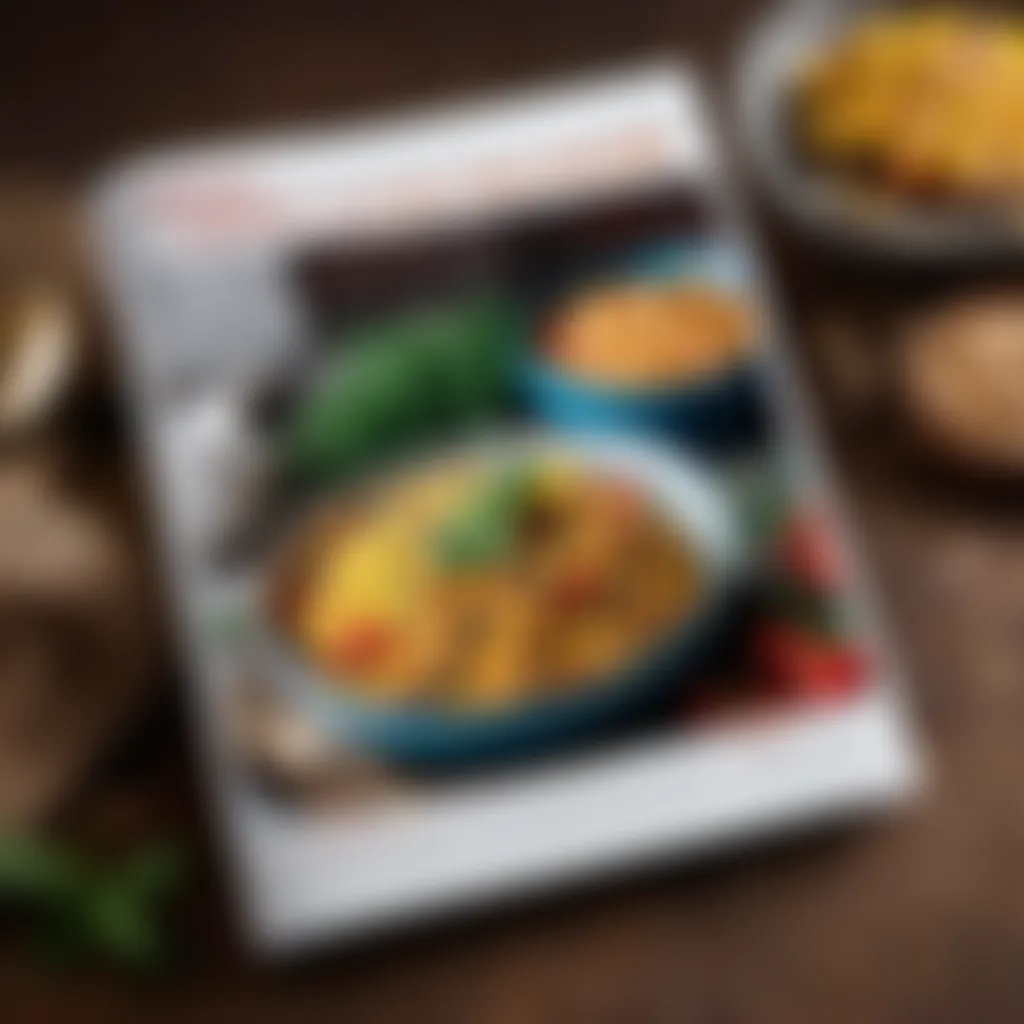
When it comes to the layout of your recipe card, there are several structures you can choose from. Each format has its distinctive benefits, allowing you to tailor your cards to your creative vision and the specific audience you aim to please. Below are three popular formats:
Vertical Layout
The vertical layout tends to be the most traditional format. It often features a title at the top, followed by ingredients listed in a single column, suffixed by instructions. This layout is popular because it mirrors the way many people jot down recipes on paper. Its chief characteristic is the straightforward flow of information from top to bottom.
A unique feature of the vertical layout is its compactness, making it easy to read from a distance, which is especially helpful when you're frantically cooking and need to glance quickly. However, the major disadvantage is it may not accommodate larger recipes with numerous steps. If you have a lengthy recipe, it might feel cramped, potentially overwhelming the user.
Horizontal Layout
The horizontal layout, on the other hand, divides the card into sections, often utilizing two or more columns. This division allows for a more expansive display of ingredients and instructions side-by-side, which feeds into a more organized view.
One of the chief qualities of this format is its ability to present all elements at once, thus minimizing the need to flip back and forth. This layout can be particularly beneficial for users who appreciate a concise summary without skimming through lengthy paragraphs. However, the downside is that it might require more space, thus limiting where you can display your recipe card, especially if printed.
Grid Layout
Grid layouts are growing in popularity, largely due to their modern aesthetics and versatile structure. Here, the card is divided into a grid, which can accommodate images, ingredients, and even a nutrition summary all in one place. The key characteristic lies in its organized, box-like design that allows for a visually pleasing pattern.
The grid layout can be especially advantageous for collectors or those keen on showcasing culinary art visually. However, this format may not suit every recipe, particularly if they do not easily fit within the prescribed boxes. A complex recipe may look sparse or jumble up due to conflicting lengths of text across different sections.
Ultimately, the choice of layout format should align with personal style and the nature of the recipe itself.
Getting Started with Microsoft Word
Starting your journey with Microsoft Word is more than just clicking on an icon. It’s about harnessing the tools at your disposal to create something practical yet visually appealing. This is the cornerstone for crafting recipe card templates that resonate with both utility and style. Whether you’ve dabbled in Word before or are just stepping into the digital design world, familiarity with basic functions paves the way for success.
Opening a New Document
Launching a new document is your first step towards designing a personalized recipe card. When you open Microsoft Word, a clean slate appears, waiting for your creativity. It might seem trivial, but this step allows you to lay down the foundation of your culinary masterpieces.
To begin, simply open Microsoft Word and choose the option to create a new document. You can opt for a blank document or select from various templates available.
What’s valuable here is having the flexibility to choose from existing templates or starting from scratch. If you're new to Microsoft Word, starting with a blank document can be liberating as it allows for full creative freedom without being constrained by pre-set designs.
Setting Up Document Dimensions
Setting up the right dimensions for your recipe card is crucial. This aspect influences not just the layout but also how expressive your recipes can be. The way you choose to format the size and margins can significantly affect the overall aesthetic appeal of your cards.
Choosing Size
Choosing the size of your document is a fundamental step in the design process. For recipe cards, standard sizes can range from 4x6 inches to 5x7 inches. This choice contributes to the functionality of the card – it's crucial that the card can easily fit in recipe boxes or standard storage solutions.
A smaller card size is often advantageous for space-saving or portability. However, consider that smaller dimensions might limit text and detail visibility. Conversely, opting for a larger size provides ample room for creativity yet may take up unnecessary space if you're aiming for compact storage.
"Choosing size is about balancing aesthetics with practicality. Understand your end use for the card before deciding."
Adjusting Margins
Once the size is set, adjusting the margins is next on the list. This step allows for control over how text and images interact with the edges of your card. Customizing margins helps ensure that nothing feels cramped or awkward on the template.
A common practice is to set standard 0.5-inch margins. This allocation serves as a buffer zone between your content and the document's edges. Reducing margins could lead to text being cut off during printing, hindering the functionality of your card. Alternatively, increasing margins may limit the content you can include. It’s about finding that sweet spot where the design feels more substantial without feeling packed.
In summary, kicking off your template creation journey in Microsoft Word hinges on understanding the little details, like opening a new document, setting sizes, and adjusting margins. These decisions are the bedrock upon which you’ll build your culinary showcase, and they unleash your creativity to take flight.
Utilizing Tables for Structured Design
Creating recipe card templates can be a rewarding endeavor. One essential tool in your arsenal is the effective use of tables. Tables help streamline the layout, allowing for organized presentation of ingredients, instructions, and notes, making them crucial for clarity and aesthetics.
When you employ tables in your recipe card design, it immediately offers a structured appearance that is both inviting and functional. Instead of a chaotic text block that burdens the reader’s eyes, tables enforce a format that resonates with the practicality needed in the kitchen. Consequently, they reduce the potential for error when following a recipe, as each component has its distinct space.
Furthermore, tables enable easy customization, allowing you to modify your design without losing the essence of what makes your card unique. By establishing a defined grid, each recipe can be made visually appealing while remaining coherent. Now, let’s break down the steps to effectively utilize tables when designing your recipe card.
Inserting Tables into the Document
To get started with your tables, you'll first need to insert them. Luckily, this process is fairly simple in Microsoft Word. Here’s how you can do it:
- Open your document in Microsoft Word.
- Navigate to the Insert tab in the ribbon.
- Click on Table. A dropdown will appear, allowing you to select the number of rows and columns you desire.
- Click and drag your cursor over the grid to choose the size of your table. It's that easy!
Once your table is in place, you can begin filling it with the essential elements of your recipe. This structured approach not only enhances readability but also aids in the cooking process.
Customizing Table Layouts
Now that you have your table in the document, customization is key to making it fit your recipe’s theme. This involves adjusting the dimensions and appearance of the table components to create a polished look that suits your individual style.
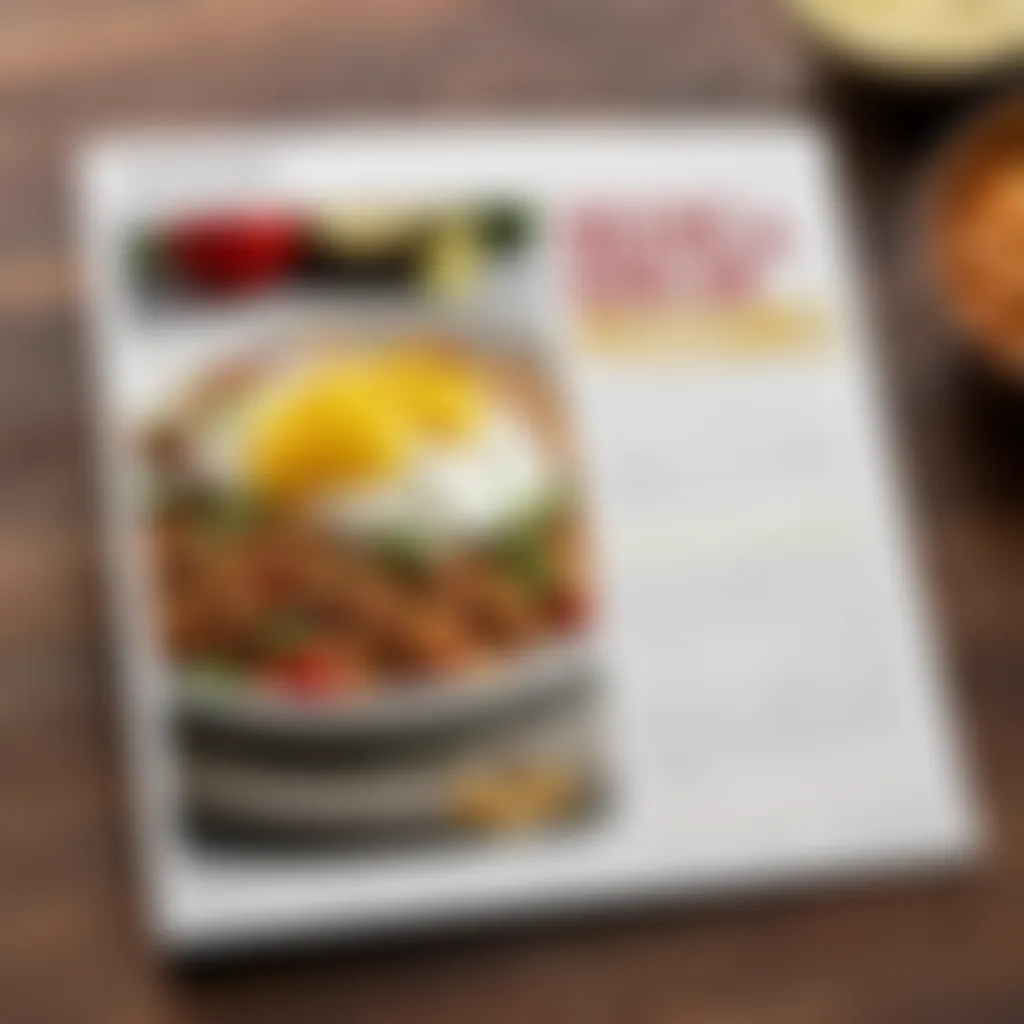

Adjusting Cell Size
Adjusting cell size is a crucial aspect of table layout customization. By tweaking the dimensions of specific cells, you can ensure that ingredients and instructions have plenty of space. This contributes significantly to the overall clarity of your recipe card.
- Key Characteristic: Larger cells can make the card look less cluttered, allowing important information to stand out.
- Benefits: Greater space can make text more readable and accessible, particularly for those who may have trouble reading small print.
- Unique Feature: The flexibility of adjusting cell size means you can cater to different recipes. For instance, a complex recipe might need wider cells for longer text, while a simpler one may require less space.
Changing Borders and Shading
Borders and shading contribute a great deal to the visual appeal of your recipe card. Choosing the right style here can make your card pop while keeping functionality intact.
- Key Characteristic: Borders clarify the distinctions between different sections, while shading can help highlight specific areas.
- Benefits: A well-designed border helps emphasize the categories of your recipe - like separating ingredients from cooking instructions. Shading can also enhance focus, drawing attention to vital steps or notes.
- Unique Feature: Utilizing varying shades can add a burst of color to your card, guiding through visual hierarchy. Careful consideration is needed, as overdoing it might clutter your design.
This structured approach to utilizing tables ensures that your recipe cards don’t just serve as a functional item but as a delightful expression of creativity. Invest the time to refine your layout, as this small step can yield significant returns in how your recipes are perceived and used by others.
Incorporating Text Elements
Text elements are the soul of any recipe card template, infusing it with information and personality. They guide the reader through the culinary process, making the card not just a decorative piece but a functional tool in the kitchen. Every cook, whether an amateur or a seasoned chef, needs to easily interpret the instructions. If the text is clear and visually appealing, it can elevate the cooking experience and make preparing a meal feel like an art.
Choosing Appropriate Fonts
When it comes to creating recipe card templates, the choice of font plays a crucial role. Fonts can convey ideas and emotions, and it’s important to select one that reflects the spirit of your recipes. For instance, a playful script font may suit a fun dessert recipe, while a clean serif font is better for more traditional dishes.
- Readability is key; if a font looks nice but can't be read at a glance, it defeats the purpose.
- Consistency across your cards also matters. Using a couple of fonts that complement each other can create a harmonious look, but don’t get carried away—two or three different styles usually suffices.
Text Alignment and Spacing
Alignment Techniques
Alignment refers to how your text is positioned on the card. Different alignment techniques can influence the clarity and aesthetic look of your recipe card. Center alignment often gives an elegant feel, which works well for headings, while left alignment is perfect for the body text as it is easier to read.
- Key characteristic: Left alignment is generally the most recommended because it aligns text with the natural reading flow of the eye.
- Using center alignment for titles or crucial information can draw attention, but if overused, it can become distracting.
Unique feature: Balanced alignment directs the reader's gaze, enhancing usability and visual appeal. By mixing it up with strategic use of left, right, and center alignment, you can guide a reader through the recipe smoothly, highlighting steps or ingredients as necessary.
Line and Paragraph Spacing
Spacing can also make or break the readability of your recipe card. Proper line and paragraph spacing allows the reader to digest information without feeling overwhelmed. Too little space can lead to clutter, while too much may cause disconnection.
- Key characteristic: A good rule of thumb is to leave space between lines that is 1.5 times the height of the text. This creates a breathing room, allowing the eyes to move easily from one line to the next.
- Consider the step of the recipe; for instance, separating ingredients lists from cooking instructions with additional spacing can help reduce ambiguity.
Unique feature: Adequate spacing not only enhances readability but also impacts how the overall design is perceived. A well-spaced card looks cleaner, which could subtly enhance the perception of the quality of the recipes contained within.
"A recipe card isn't just a guide; it's a canvas that shares the love of cooking. The right text elements make it sing."
Adding Visual Elements
In the realm of recipe cards, visual elements play a crucial role that can’t be overlooked. They serve not just to beautify the layout but also to enhance the user experience. When you insert images, icons, and incorporate color smartly, it amplifies the appeal and usability of your recipe card templates. In a kitchen bustling with activity, a visually clear recipe card can be the difference between a successful dish and a culinary mishap.
Inserting Images and Icons
Images and icons are essential visual cues that breathe life into your recipe card. A well-placed photo of the dish can whet the appetite even before someone begins cooking. It sheds light on what the finished product should look like, acting as a motivator for the cook to follow through.
Besides showcasing the end result, you can also use icons to symbolize specific actions or ingredients – think a simple icon of a whisk indicating whisking, or a flame illustrating cooking on high heat. These visuals can streamline the cooking process by providing quick references without cluttering the card with long text descriptions.
It’s important to choose images that are clear, high-resolution, and appropriately sized. Avoid squeezing an image into a space it doesn't fit; it can make the card hard to read. Also, ensure that your images have a personal touch. A family photograph or a unique dish prepared in your style can add a heartwarming layer of character to the card, making it even more relatable.
Using Color Effectively
Colors are more than just aesthetic choices; they communicate moods, enhance readability, and can even guide the user’s attention to key aspects. A well-thought-out color application can help elevate the function of your recipe card from merely a collection of words to an inviting piece of art that stands out whether it’s on your countertop or pinned to a bulletin board.
Choosing a Color Palette
Picking the right color palette is like selecting the right spices for your dish. It not only unifies the entire look but can also evoke specific feelings. For instance, vibrant colors may suggest freshness and energy, appealing for a summer salad recipe. On the other hand, rich, earthy tones may lend a warm, inviting quality to a comforting stew. The key lies in balancing your choices.
In this guide, a monochromatic or analogous palette might be particularly beneficial. Monochromatic palettes can create a sense of elegance and simplicity while making it easier to coordinate text and images. The unique feature of this approach is that it allows for easy readability without overwhelming the viewer with too many contrasting hues. However, overusing colors can also lead to confusion, so moderation is crucial.
Applying Background Colors
Background colors can create a noteworthy distinction and evoke emotion. They can set the tone for your entire recipe card. For instance, a soft pastel background might instill a sense of calm, perfect for a comforting tea recipe. Conversely, bold, saturated hues can invigorate a card meant for snack recipes aimed at a youthful audience.
The benefit of applying background colors is that it divides sections clearly, enhancing readability by giving structure to your recipe card. This feature is particularly useful when you have multiple categories, such as ingredients, preparation steps, and cooking times. However, it’s essential to ensure that the background doesn’t overshadow the text; selecting lighter shades for background colors is typically a safer choice for readability.
As you finalize the design of your recipe card template, remember that every visual element is a step toward making the cooking experience smoother and more enjoyable. Well-placed images and thoughtful use of color will make your recipe cards not just functional but memorable.
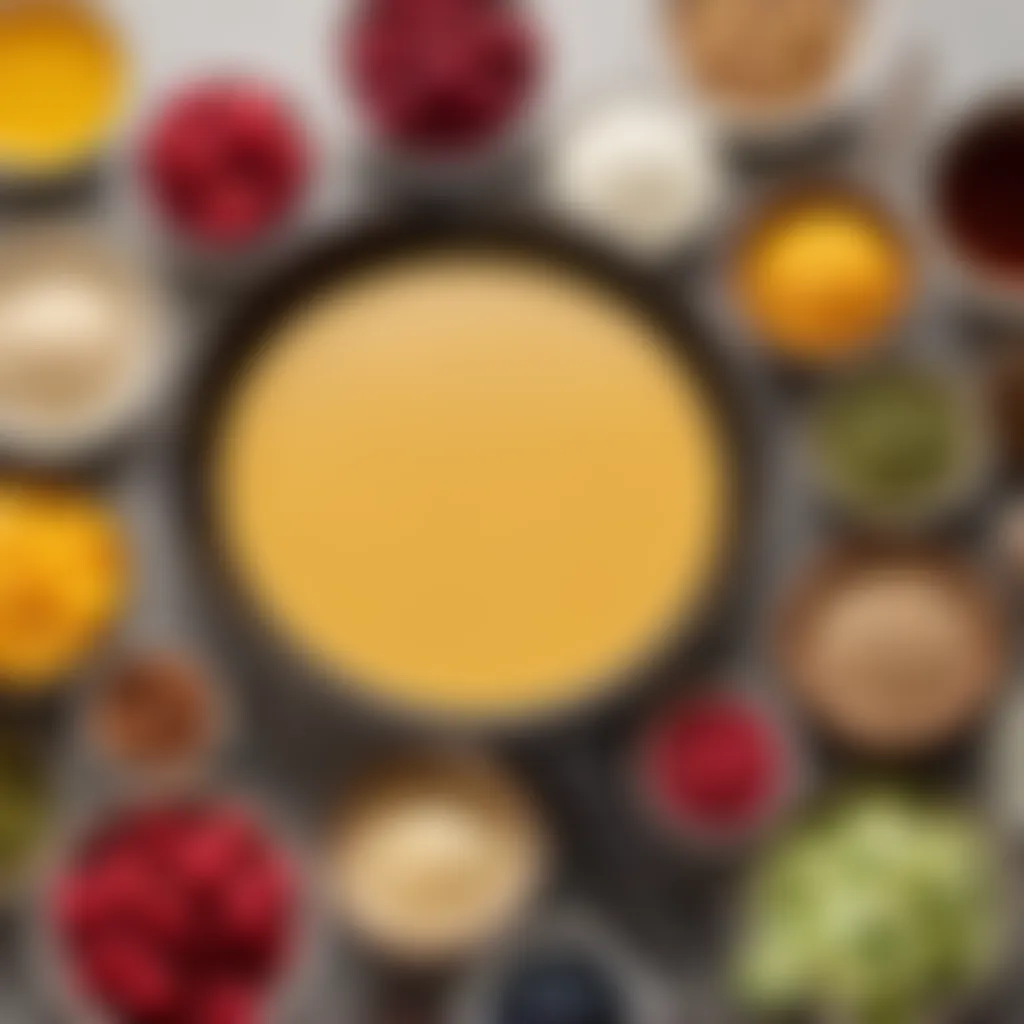
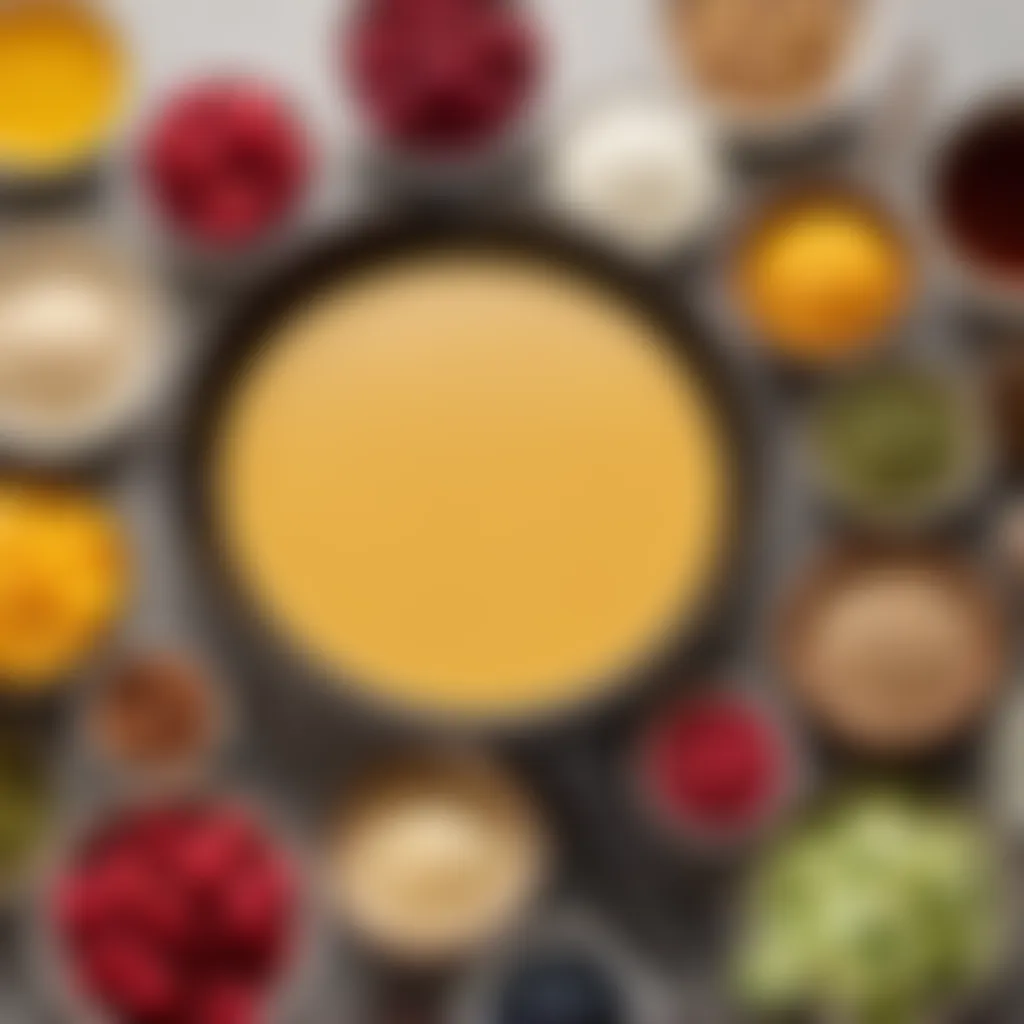
Finalizing the Template Design
When you reach the stage of finalizing the template design, it's like adding the cherry on top of a sundae. It is where all your hard work comes together to create a recipe card that's not only functional but also visually appealing. The importance of this step cannot be overstated; a well-finished template ensures clarity of information, enhances aesthetic appeal, and ultimately makes using the recipe card enjoyable and effective. This section breaks down critical elements, benefits, and considerations that need to be kept in mind during the final touches.
Reviewing for Consistency
Consistency is key in any design project, especially when it comes to recipe cards. You want the text font, size, and color to match throughout the entire card. This doesn't just make the card look more professional; it helps users find information quickly. Imagine flipping through a cluttered recipe book where each card screams for attention in different fonts and styles. Frustrating, right?
Here are a few things to check for consistency:
- Font Type: Stick with one or two fonts. Too many styles can overwhelm. A bold font for headings and a simpler one for instructions works wonders.
- Spacing: Ensure the spacing between sections is uniform. A well-structured card will guide the reader smoothly through the recipe.
- Color Scheme: Maintain the same color palette across the card. Whether you're going with pastel or vibrant colors, it’s important for the colors to be in harmony.
By systematically reviewing for these details, you'll end up with a polished card that looks as good as the dish you plan to create.
Saving the Template for Future Use
Saving as a Word Template
One of the best parts of using Microsoft Word is the ability to save your creation as a template. By saving it as a Word template, you ensure that you can reuse the design without having to start from scratch every time. This is handy, saving time and effort while keeping your branding intact. A Word template allows you to maintain all your carefully chosen elements for future recipes.
- Key Characteristic: Templates keep all formatting, so you don’t need to worry about layout issues each time you start a new card.
- Unique Feature: You can quickly replace recipe content without disturbing the design, making it a flexible choice.
- Advantages: This method of saving not only speeds up future projects but also helps ensure that your cards remain cohesive in their look and feel.
However, do be aware that this option may limit some advanced functionalities that might require conversion to a different format later on.
Exporting as PDF or Image
Exporting your recipe card as a PDF or image is another valuable step for ensuring accessibility and maintaining quality. This is particularly useful if you plan to share your recipes online or print them out. By exporting, you are ensuring that the design stays intact and appears exactly as you intended, regardless of the software used to open it.
- Key Characteristic: PDFs are widely compatible and maintain the integrity of your layout, ensuring that your design looks the same on any device.
- Unique Feature: Images can be easily shared on social media and websites, allowing for greater outreach to fellow cooking enthusiasts.
- Advantages: A PDF ensures that anyone can view your recipe card without needing specific software, while an image provides flexibility for embedding or sharing in various platforms.
Both options offer great benefits. Depending on your needs, you might find yourself using a combination of both. In this stage, choosing the right format can significantly enhance how your recipes are perceived and shared.
"A well-designed recipe card not only guides the cook but also puts a smile on their face, a visual feast before the culinary one."
By taking the time to finalize the template design with these steps, your recipe card will not only be ready for action but will also reflect your creativity and personal touch.
Practical Tips for Recipe Card Usage
Creating a recipe card template isn't just about aesthetic appeal. Practical tips can enhance usability and functionality, allowing these tools to serve home cooks effectively. Designing with intention ensures that the cards do more than look nice – they become trusted companions in the kitchen.
Printing Considerations
When it comes to utilizing physical recipe cards, think through the printing process carefully. The size and quality of card stock can significantly affect the overall performance of your recipes during cooking. Here are some essential thoughts:
- Choosing the Right Paper: Opt for a heavier-weight paper for durability. Thicker stock will hold up better in kitchen environments, where spills, stains, and splatters are pretty much inevitable.
- Format Adjustments: Before hitting print, double-check the layout. Research suggests that half-letter size (5.5 x 8.5 inches) is often a good fit for recipe cards. This makes them easy to handle without taking up too much space.
- Color Settings: Remember to preview in both color and black-and-white. If you’re working with a more vibrant design, a color printer will elevate the visual appeal. If you’re using a standard printer, test a page first to see how it looks.
"The true essence of a well-printed recipe card is its ability to withstand kitchen chaos while remaining readable and functional."
Along with these, don’t forget to align your printer settings, ensuring they match the dimensions of your recipe cards. A bit of attention at this stage saves a truckload of time later on.
Utilizing Digital Versions
In today's world, going digital offers fantastic flexibility. This approach allows for immediate access to recipes and personal customization options without the hassle of physical cards. Here’s how to maximize your digital recipe cards:
- Cloud Storage: Use platforms like Google Drive or Dropbox for saving your templates. Accessing your recipes from any device means you won’t be hunting for a misplaced card when you’re ready to cook.
- Interactive Features: Consider adding links to videos or cooking tutorials directly in your digital files. This transforms a simple recipe card into a comprehensive cooking guide.
- Sharing Options: Digital recipes can easily be shared via email or social media. This encourages a networked experience among friends or family who might want to try your dishes. Consistent sharing can inspire group cooking sessions, making meal prep a social event.
- Backup Protocols: Always keep a backup. Save copies on a USB drive or external hard drive. Losing your carefully crafted collection due to a device malfunction can be incredibly frustrating.
To sum it all up, both printed and digital formats have their place in the realm of recipe card usage. By considering the particulars of each method, you can ensure that your recipe cards serve their purpose well, be it earning a solid reputation in your household or just making cooking a smidgen easier.
Closure
As we wrap things up, the conclusion holds significant weight in any discussion—particularly so for crafting recipe card templates in Microsoft Word. The essence of this process doesn’t merely lie in the finished product, but in understanding how each design choice serves a dual purpose: functionality and aesthetics. A well-crafted recipe card is not just a piece of paper; it is a culinary narrative, inviting both the cook and the reader to embark on a journey.
A primary takeaway from this article is the value of structure. Through well-defined layouts and thoughtful use of tables, your recipe cards can transform from simple lists of ingredients to visually engaging documents that catch the eye and spark the imagination. Each element such as fonts, colors, and images contributes to the overall readability and appeal. This meticulous consideration extends to usability as well—ensuring that your cards are easy to navigate helps any home cook quickly find the information they need.
Moreover, saving your templates ensures that you can repeat your success across different recipes. Whether you're dishing up Grandma’s famous apple pie or trying your hand at a trendy vegan dish, consistency is key. Keeping your designs uniform allows for smoother meal planning and sharing of recipes amongst family and friends.
"A recipe is a story that ends with a good meal. Your template is the canvas on which that story unfolds."
Summarizing Key Takeaways
- Structure Matters: Utilize tables and clear layouts for effective presentations of your recipes.
- Consistency is Key: Save your templates for easy access and uniformity.
- Visual Appeal: Invest time in font selection, color choice, and imagery to enhance the overall look.
- Embrace Personalization: Let your recipe cards tell your unique story, making them truly yours.
Encouragement for Personalization
Now, here’s where the fun kicks in! Don’t hold back on adding your unique flair to your recipe cards. Personalization can range from adding family photos to experimenting with color schemes that match your kitchen decor. Think about what makes your cooking distinct—perhaps it’s a signature spice mix or a cooking method passed down through generations. Incorporating these little nuances into your templates not only enriches the cards themselves but also preserves the essence of your culinary heritage.
Consider also getting family members involved. Asking your kids or partner what they think of your design ideas can spark creativity and perhaps lead to delightful surprises. A family recipe card should feel welcoming, like a hug in the form of a recipe.
Finally, remember that the real joy lies not just in creating beautiful cards, but in the experiences and memories that come with sharing those recipes. Whether it’s a cozy dinner with loved ones or a festive gathering, your personalized recipe cards can serve as conversation starters and cherished keepsakes for years to come.







